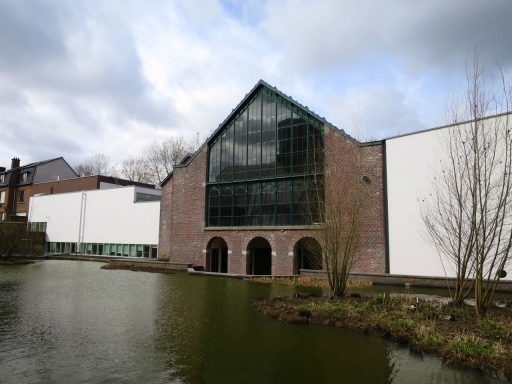A former waterworks in Mons has been transformed into a new museum dedicated to remembering the wartime occupations of the Belgian city, and its historic role at the start and finish of Britain’s First World War campaign. CN Deputy Editor Peter Alhadeff reports from Mons.
For the people of Mons, the British retreat in the face of superior German numbers after the battle of August 23rd 1914 marked the beginning of an enemy presence which would continue until liberation by Canadian troops on the very last day of the war, November 11th 1918.
Their story, together with those who fought here, is told at the Mons Memorial Museum, an elegantly converted industrial building which once pumped the city’s water supply. Together with four other showpiece architectural projects, it was opened on April 2nd to celebrate the regeneration of Mons as a 2015 European Capital of Culture.
The First World War is at the centre of a series of displays that also include the Second World War and earlier conflicts. They are a reminder that the great powers of Europe have frequently fought over a city now chosen to embody 21st century ideals of European cooperation.
The museum has sourced individual stories from 5,000 letters, notebooks and interviews. Many of the exhibits were donated by local people as well as descendants of veterans.
Among the major objects is the gun which fired the last shot in 1918, presented to Mons by the Canadians after the First World War
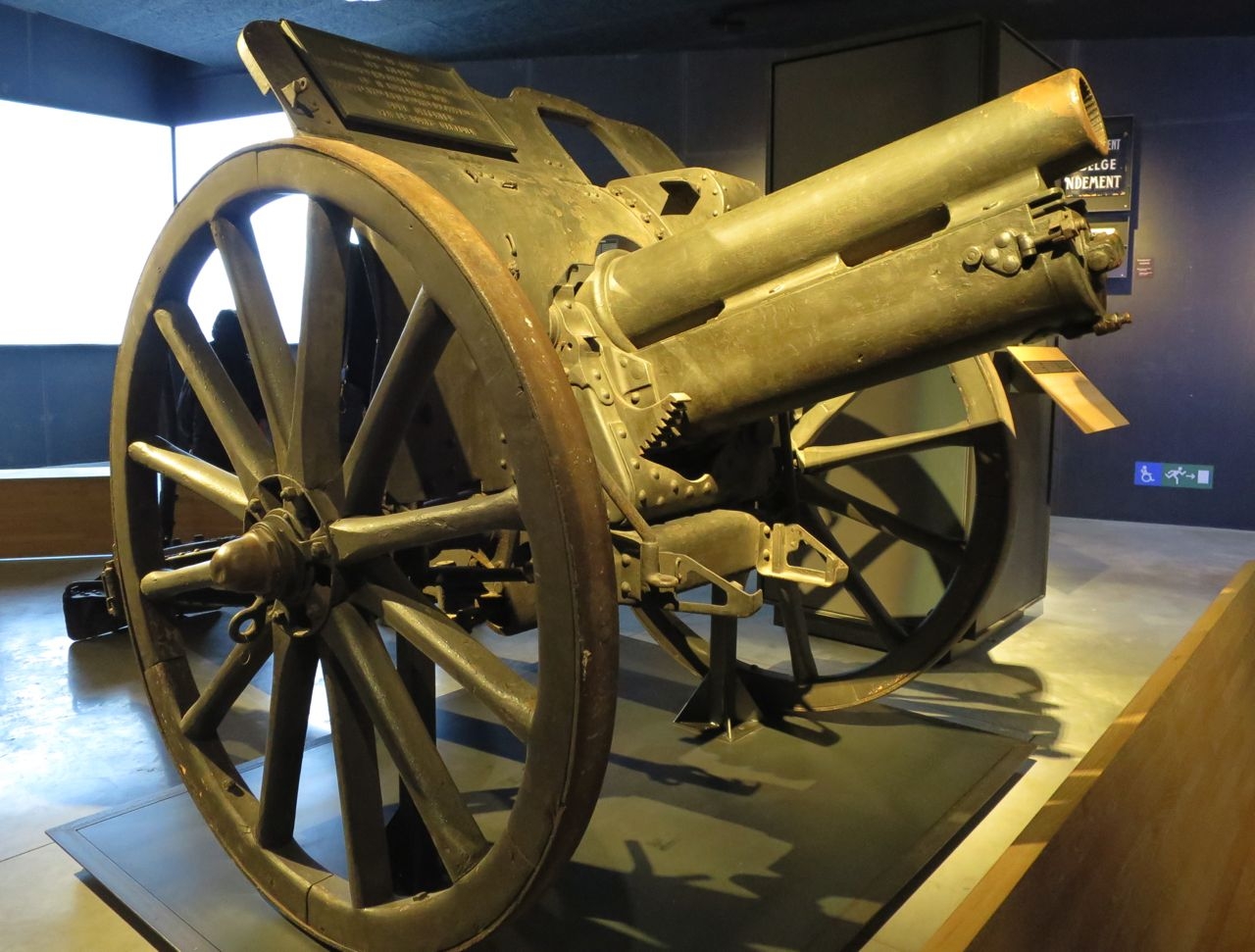
But the museum also aims to reflect the wider human cost of the conflict and the occupation which followed the British withdrawal in 1914
Curator Guillaume Blondeau says: “Our goal is to show that the war is not only a military fact.”
Civilians found themselves in the front line in August 1914, used as human shields by the Germans, Mr Blondeau told Centenary News.
“For us it is important to make a parallel between soldiers and civilians. So we use a lot of personal testimonies of soldiers. We also collected artefacts from families here and interviewed the grandchildren of civilians. We have diaries of civilians who noted what happened every day in Mons.”
Mr Blondeau says some of those testimonies are intensely personal; posters of the time reveal the restrictions imposed by the German military authorities.
Orders for the reopening of schools went out in late September 1914 to counter ‘idleness.’ But all permits to ride bicycles in occupied Belgium were cancelled (below) because of attacks on German troops, railways, and telegraph and telephone lines.
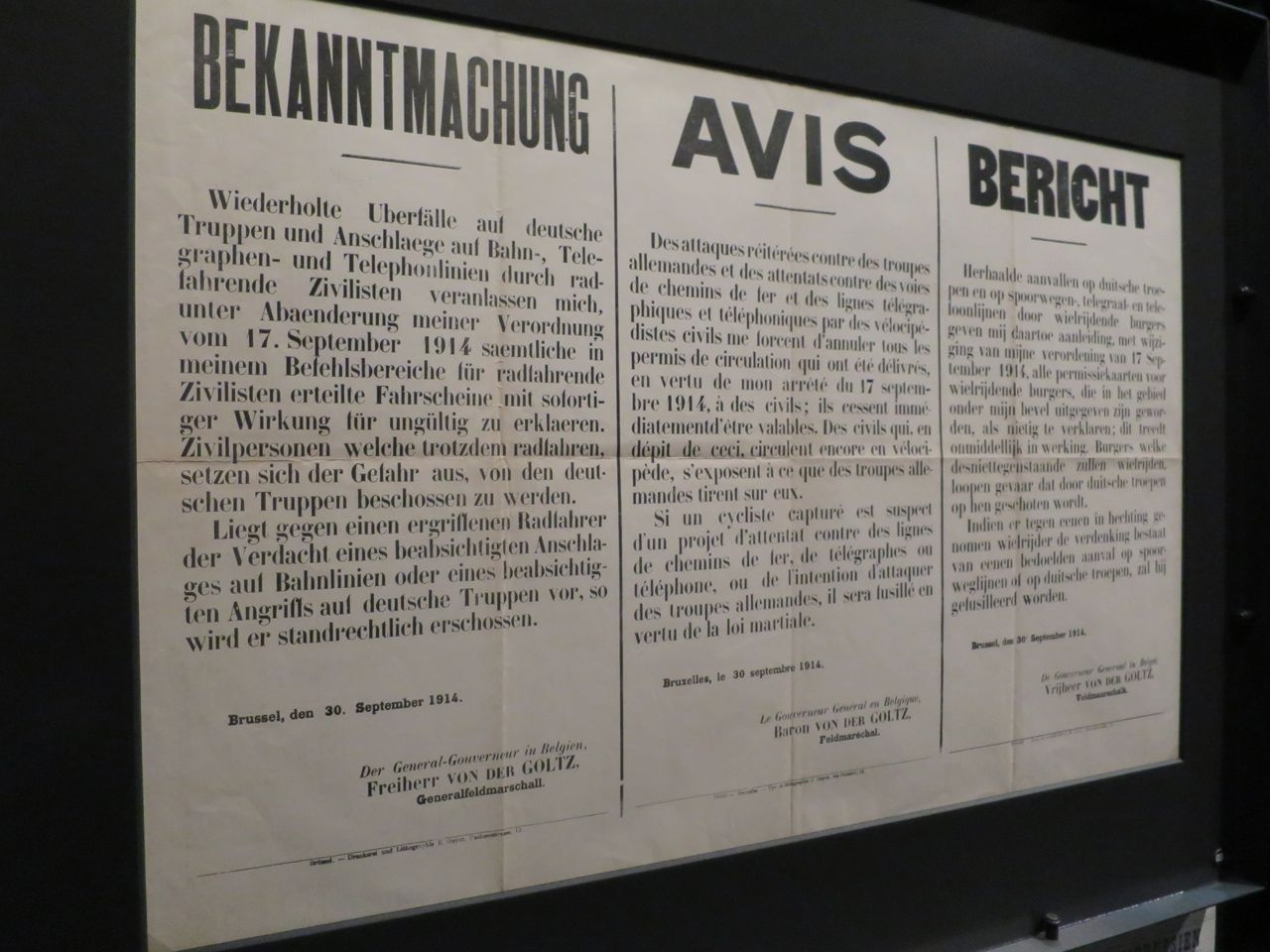 Churches became the one place where patriotism could be freely expressed without fear of suppression by the occupiers.
Churches became the one place where patriotism could be freely expressed without fear of suppression by the occupiers.
Over time, sporting and artistic events became popular again as a relief from boredom and suffering. But concerts organised by the Germans in a local park were carefully avoided by most of the people of Mons.
Some actively resisted, joining networks spying for the British. Seven agents were condemned to death in Mons on March 1st 1916. The wooden post used in their execution by firing squad is among the museum’s most chilling exhibits.
More uplifting is an animation retelling the story of the legendary intervention of the ‘Angels of Mons’ to protect the British as they pulled out in 1914.
And the museum boasts what it says is a unique collection of regimental drums donated to Mons by the British army units who fought here.
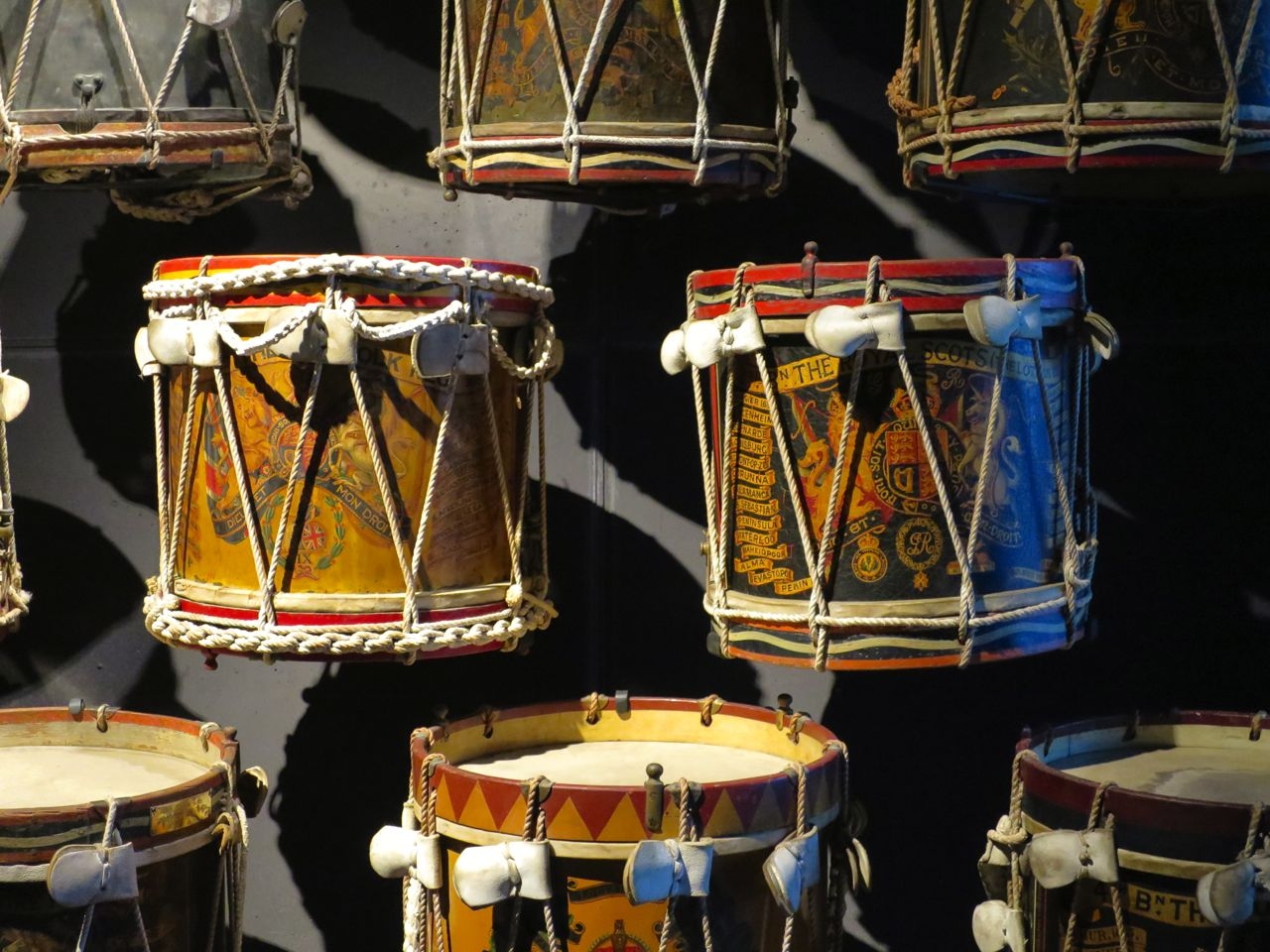
One other ‘Capital of Culture’ project will be a bonus for visitors wanting to get a bird’s-eye view of the lie of the land for the first clash of the Great War between the British and German armies.
The 17th century belfry which soars almost 90 metres above the highest point of Mons is being restored, and will open to visitors in July 2015.
From the top, there’s a commanding view across the surrounding countryside to the Mons-Condé canal, where Lieutenant Maurice Dease and Private Sidney Godley won Britain’s first Victoria Crosses of the Great War for their defence of Nimy railway bridge on August 23rd 1914.
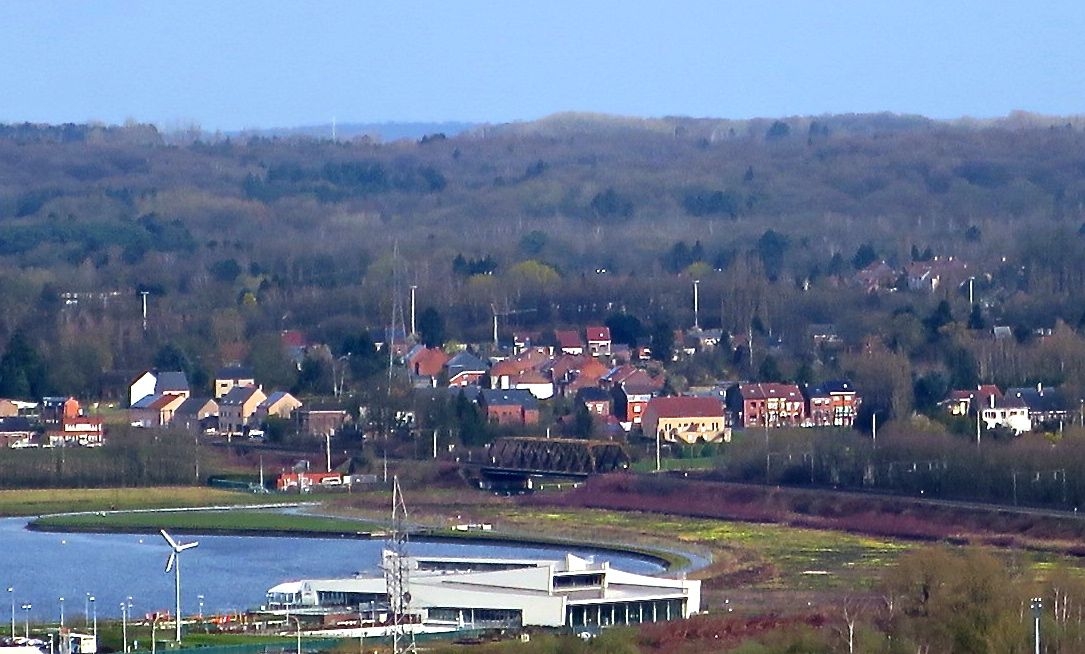 For more information, visit the Mons Memorial Museum website.
For more information, visit the Mons Memorial Museum website.
Centenary News reported from Mons on the 100th anniversary commemorations of the Battle of Mons, and the international remembrance service at St Symphorien military cemetery on August 4th 2014 marking the Centenary of the outbreak of the First World War.
© Centenary Digital Ltd & Author
Pictures: Centenary News
